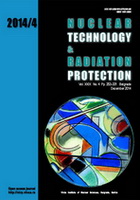
A CLINICAL IMPLEMENTATION OF IN VIVO DOSIMETRY WITH N-TYPE ISORAD SEMICONDUCTOR DIODES

Vol.
XXIX, No. 4, Pp. 253-331
December 2014
UDC 621.039+614.876:504.06
ISSN 1451-3994
Pages: 313-320
Authors: Laza M. Rutonjski, Borislava S. PetroviŠ, Milutin D. Baucal, Milan D. TeodoroviŠ], Ozren N. ╚udiŠ, and Borko V. BasariŠAbstract
The study was aimed to check the radiotherapy treatment accuracy and definition of action levels during implementation of in vivo dosimetry as a part of quality assurance program.
The calibration and correction factors for in vivo entrance dose measurements for six n-type Isorad semiconductor diodes were determined as recommended by the European Society for Radiotherapy and Oncology Booklet No. 5. The patients for in vivo measurements have been divided in groups, according to the treatment site/techique, in order to investigate and detect the groups where the uncertainty was larger or where a systematic error occurred. The tolerance/action levels for all groups were also defined and checked. In this study, the entrance dose measurements were performed for total of 451 treatment fields, and 338 patients over one year period. The mean value and the standard deviation for different groups were: breast +1.0% ± 2.89%(1 SD), brain, and head and neck – +0.74% ± 2.04%(1 SD), and isocentric pelvis and abdomen – +0.1% ± 2.86%(1 SD). All measurements – +0.72% ± 2.64%(1 SD). In our experience, systematic in vivo dosimetry proved to be a very useful tool for quality assurance of patient's plan and treatment, both in detecting systematic errors and for estimating the accuracy of radiotherapy treatment delivery.
Key words: radiotherapy, in vivo dosimetry, detector, quality assurance
FULL PAPER IN PDF FORMAT (652 KB)